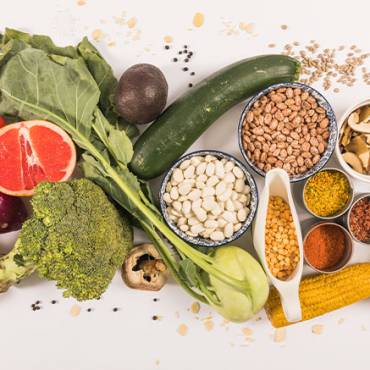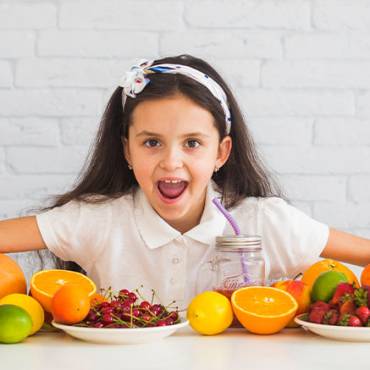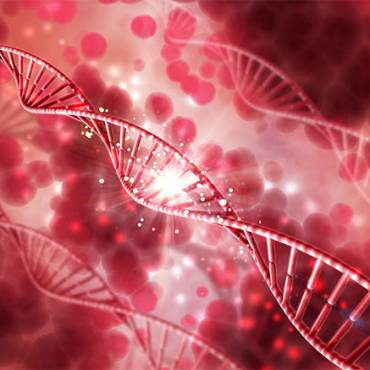Our bodies need iron to make haemoglobin, which takes oxygen through the blood to all the cells. Children especially need to eat a variety of foods that contain iron every day to make sure they have enough iron in their body. Breastfed babies usually get enough iron from their mother’s milk; on the other hand, infants being fed with milk formula should receive an iron-fortified formula. When toddlers switch to eating regular foods, it’s possible that they might not get enough iron. If babies and children don’t get enough iron, they may develop a condition called iron-deficiency anaemia. This may cause tiredness, headache, loss of appetite and repeated infections, and can also affect growth and may lead to learning and behavioural problems.
When you start giving solid foods to your child, make sure to choose foods that contain iron. In foods, iron is found in two forms: haem and non-haem iron.
- Haem iron, found in meats, poultry, fish and seafood, is more easily absorbed by the body.
- Non-haem iron comes from plant sources such as legumes, vegetables, and cereals.
Here are some foods that are rich in iron:
- Meats: beef, lamb, pork, liver, chicken.
- Fish (babies under 1 year of age should not eat shellfish such as lobster, shrimp or scallops as it may lead to allergic reactions).
- Eggs (do not give egg whites to babies under 1 year of age as it may lead to allergic reactions).
- Grains and cereals: iron-fortified cereals, whole-grain breads, iron-enriched bread, pasta and rice.
- Legumes: chickpeas, lentils, dried peas and beans.
- Vegetables: spinach, broccoli, sprouts, green peas and beans.
Iron absorption can be improved by eating foods high in vitamin C along with iron foods. Here are some foods high in vitamin C to include in your child’s diet:
- Citrus fruits, e.g. oranges, lemons, pineapple, and kiwi fruit
- Berries, e.g. strawberries
- Some vegetables, e.g. capsicum, tomatoes, cabbage, or broccoli)
[expand title=References]
- McCarthy, E., Murray, D., & Kiely, M. Iron deficiency during the first 1000 days of life: Are we doing enough to protect the developing brain? Proceedings of the Nutrition Society. 2022, 81(1), 108-118. This is an Open Access article, distributed under the terms of the Creative Commons Attribution (CC BY) licence https://creativecommons.org/licenses/by/4.0/. The article has been taken from the (Proceedings of the Nutrition Society), and the content has been modified for its use on the platform. This is attributed to Elaine K. McCarthy, Deirdre M. Murray, Mairead E. Kiely, and the original version can be found in the link below https://www.cambridge.org/core/journals/proceedings-of-the-nutrition-society/article/iron-deficiency-during-the-first-1000-days-of-life-are-we-doing-enough-to-protect-the-developing-brain/AE766176048B398D618D01898BB2E5A4 , Iron deficiency during the first 1000 days of life: Are we doing enough to protect the developing brain? Proceedings of the Nutrition Society. 2022, 81(1), 108-118.
- Kumar A, Sharma E, Marley A, et al. Iron deficiency anaemia: pathophysiology, assessment, practical management. BMJ Open Gastro 2022;9(1):e000759. This is distributed under the Creative Commons Attribution Non-Commercial (CC BY-NC 4.0) license http://creativecommons.org/licenses/by-nc/4.0/ . The article has been taken from the (BMJ Open Gastroenterology), and the content has been modified for its use on the platform. This is attributed to Aditi Kumar, Esha Sharma, Alexandra Marley, Mark A Samaan, Matthew James Brookes, and the original version can be found in the link below https://bmjopengastro.bmj.com/content/9/1/e000759.long , Iron deficiency anaemia: pathophysiology, assessment, practical management. BMJ Open Gastro 2022;9(1): e000759.
- Khandelwal S, et al. Infant Young Child Feeding Practices in an Indian Maternal-Childbirth Cohort in Belagavi, Karnataka. Int J Environ Res Public Health. 2022;19(9):5088. This is distributed under the Creative Commons Attribution 4.0 Unported (CC BY) license (https://creativecommons.org/licenses/by/4.0/). The article has been taken from the (International Journal of Environmental Research and Public Health), and the content has been modified for its use on the platform. This is attributed to Khandelwal S, Kondal D, Chakravarti AR, Dutta S, Banerjee B, Chaudhry M, Patil K, Swamy MK, Ramakrishnan U, Prabhakaran D, Tandon N, Stein AD, and the original version can be found in the link below https://www.mdpi.com/1660-4601/19/9/5088/htm , Infant Young Child Feeding Practices in an Indian Maternal-Child Birth Cohort in Belagavi, Karnataka. Int J Environ Res Public Health. 2022;19(9):5088.
[/expand]
Disclaimer: This blog is brought to you by Cipla Limited(“Cipla”) for information and awareness purposes. NOT INTENDED AS A SUBSTITUTE FOR PROFESSIONAL MEDICAL ADVICE. Please consult your doctor healthcare professional before starting any treatment/medicine. Cipla shall not be responsible for the contents of this blog or for any opinions expressed or advice shared herein. Cipla makes no representations with respect to the accuracy, completeness, correctness, suitability, or validity of any information mentioned herein, and shall not be responsible for any direct, indirect, consequential, or other damages arising therefrom. The “CIPLA” mark and logo are the sole intellectual property of Cipla Limited. Image/ Characters shown are only for representation.”






